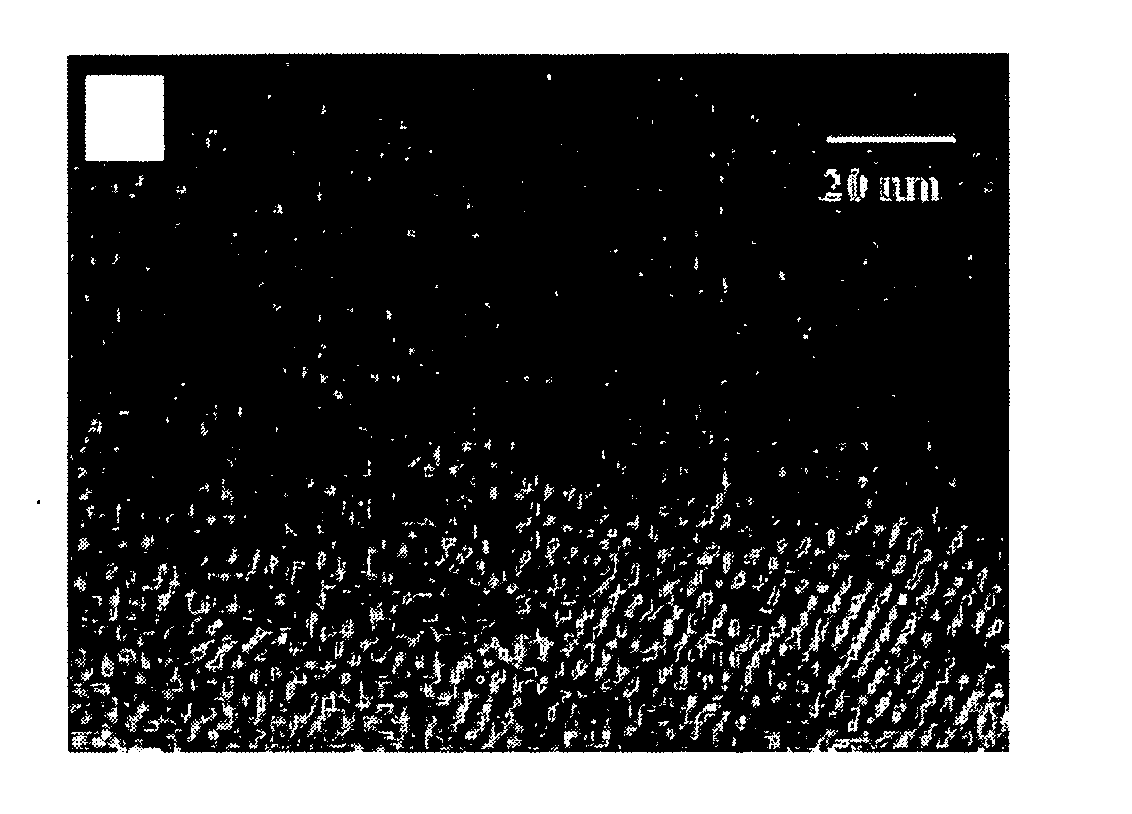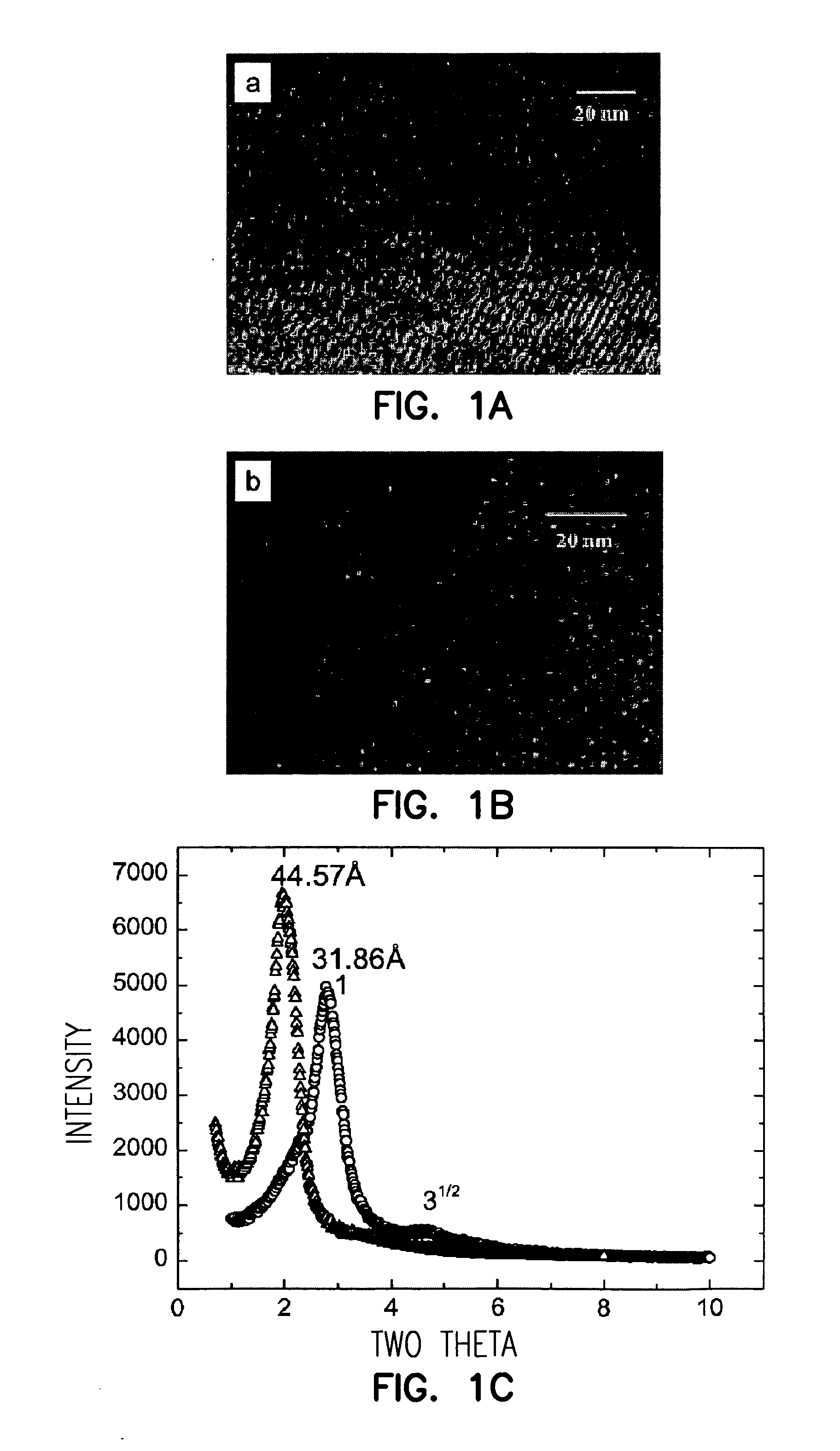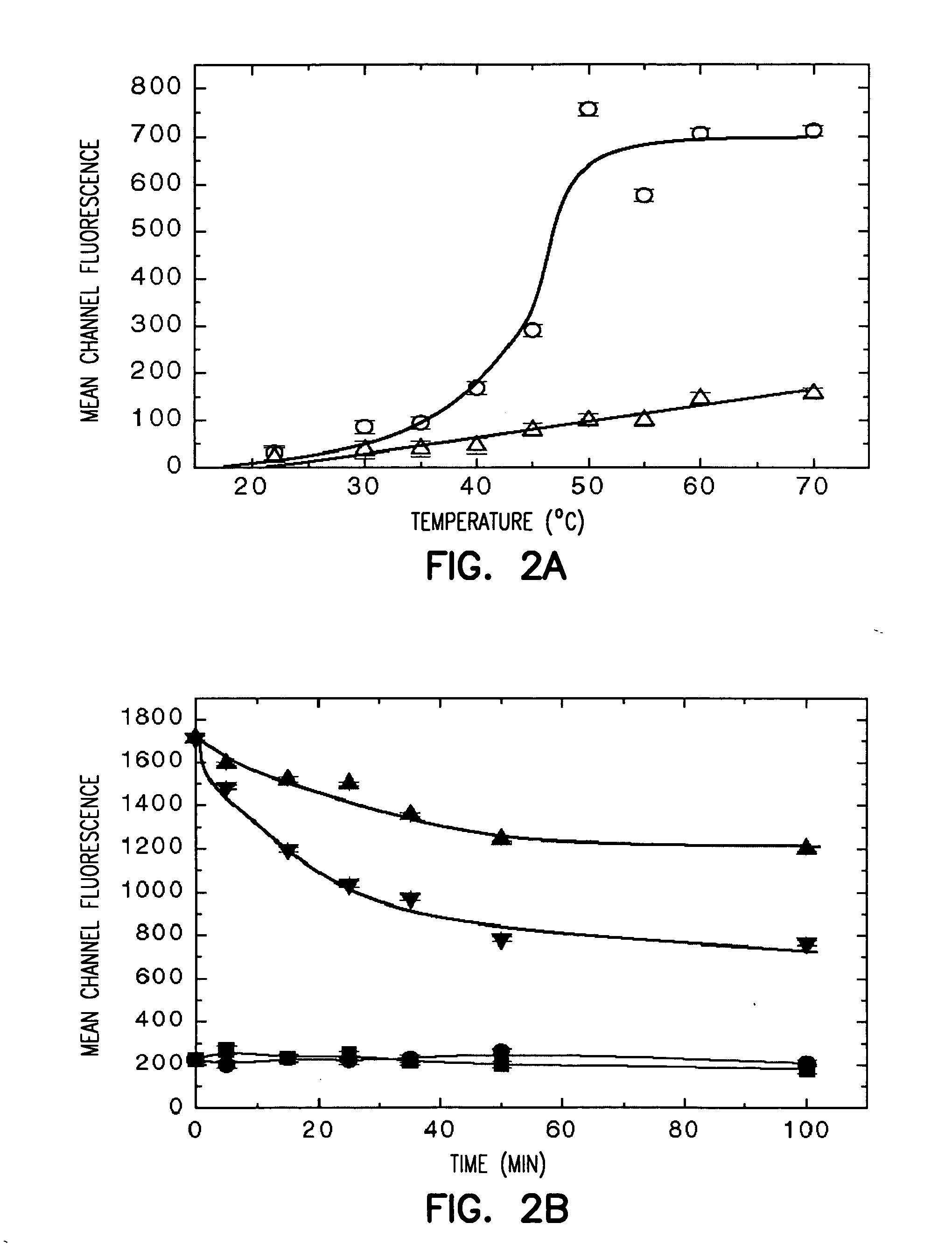Stimuli responsive mesoporous materials for control of molecular transport
- Summary
- Abstract
- Description
- Claims
- Application Information
AI Technical Summary
Benefits of technology
Problems solved by technology
Method used
Image
Examples
example 1
Synthesis of Mesoporous Silica
Synthesis of mesoporous silica was carried out using a two-step acid-catalyzed sol-gel process (as described by Lu et al., Nature, 398, 223 (1999)). Cetyltrimethyl ammonium bromide, a cationic surfactant was used as a structure-directing agent for the preparation of particles. In a typical preparation, tertraethylorthosilicate (TEOS) (Aldrich), ethanol, deionized water (conductivity less than 18.2 MΩ cm), and dilute HCl (mole ratios 1:3.8:1:0.0005) were refluxed at 60° C. for 90 min to provide the stock sol. 20 mL of stock sol was diluted with ethanol, followed by addition of water, dilute HCl, and aqueous surfactant solution (2.5 g of surfactant dissolved in 20 mL of water) to provide final overall TEOS / ethanol / H2O / HCl / surfactant molar ratios of 1:27:55:0.0053:0.19. The monodisperse droplets were generated by means of a vibrating orifice aerosol generator (VOAG) (TSI Model 3450). In the VOAG, the aerosol solution was forced through a small orifice 20...
example 2
Synthesis of Grafted Particles
Monodisperse mesoporous silica microparticles (as reported by S. H. Chung, S. Kuyucak, Eur. Biophys. J. Biophys. Lett. 31 , 283 (2002)), were modified by surface grafting according to the procedure described by Huang and Wirth in Anal. Chem., 69, 4577 (1997) and adapted to N-isopropylacrylamide (NIPAAm). Hydroxyl groups were created on the silica surface by treatment with concentrated HNO3 for 4 h and subsequent washing with ultra pure (>18 MΩ resistance) water and then drying at 110° C. for 2 h under N2 stream. These particles were then added to a reactor containing 0.5 mL of the initiator, 1-(trichlorosilyl)-2-[m / p-(chloromethyl) phenyl]ethane and 50 mL of anhydrous toluene. The reaction was carried out at room temperature for 12 h. The silica particles were then washed with toluene, methanol, and acetone and dried at 110° C. for 2 h. Atom transfer radical polymerization (ATRP) was performed on the initiator-derivatized particles. 0.2 g of silica pa...
PUM
 Login to View More
Login to View More Abstract
Description
Claims
Application Information
 Login to View More
Login to View More - R&D
- Intellectual Property
- Life Sciences
- Materials
- Tech Scout
- Unparalleled Data Quality
- Higher Quality Content
- 60% Fewer Hallucinations
Browse by: Latest US Patents, China's latest patents, Technical Efficacy Thesaurus, Application Domain, Technology Topic, Popular Technical Reports.
© 2025 PatSnap. All rights reserved.Legal|Privacy policy|Modern Slavery Act Transparency Statement|Sitemap|About US| Contact US: help@patsnap.com



